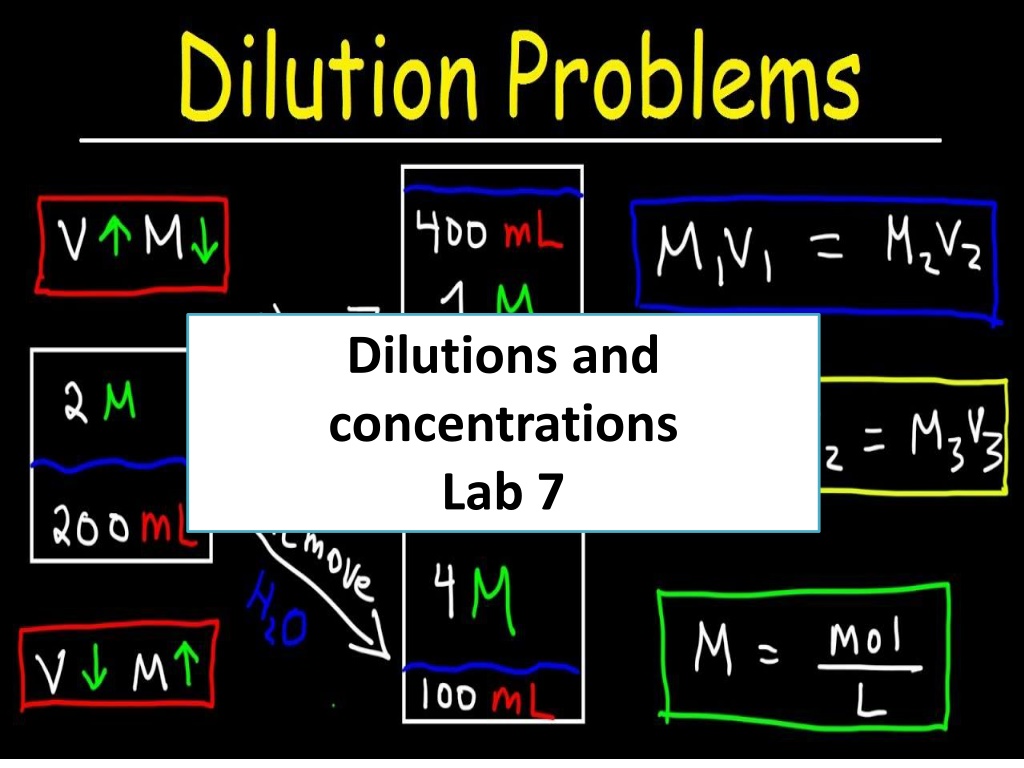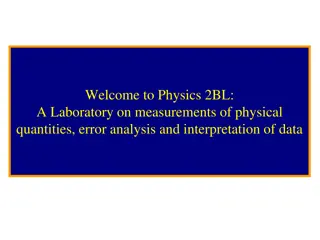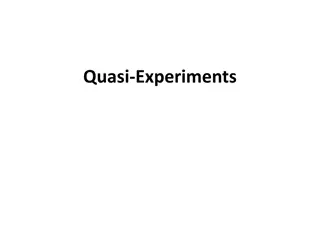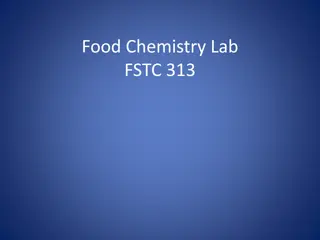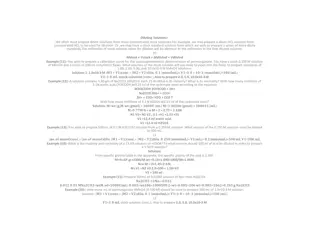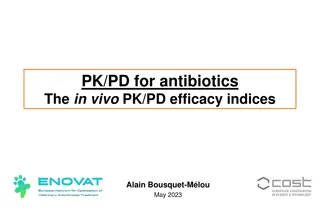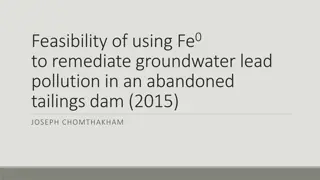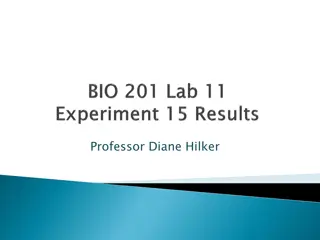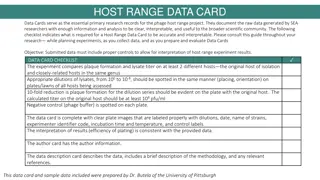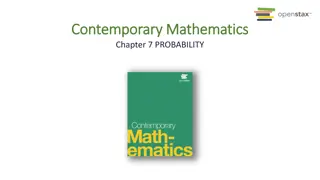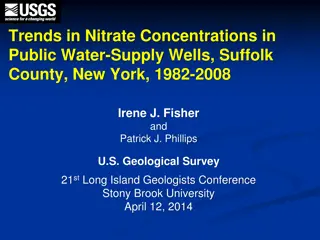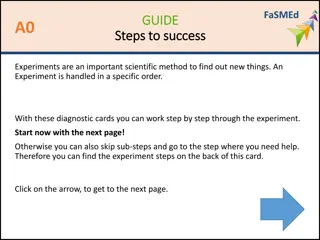Understanding Dilutions and Concentrations in Lab Experiments
Dilution and concentration are key concepts in laboratory experiments where solutions of different concentrations are adjusted to achieve specific concentrations. The process involves diluting high concentration solutions with suitable diluents or concentrating low concentration solutions by various methods such as evaporation or addition of active ingredients. Understanding dilution laws and solving related problems are essential skills for accurate preparation of solutions in scientific settings.
Download Presentation

Please find below an Image/Link to download the presentation.
The content on the website is provided AS IS for your information and personal use only. It may not be sold, licensed, or shared on other websites without obtaining consent from the author. Download presentation by click this link. If you encounter any issues during the download, it is possible that the publisher has removed the file from their server.
E N D
Presentation Transcript
Dilutions and concentrations Lab 7
Dilution and Concentration Dilution means when a given solution of a mixture of high concentration is diluted by addition of the suitable diluents or admixture with solution of lower concentration. While concentration means when a given solution of a mixture of low concentration are concentrated either by addition of active ingredient or by admixture with higher strength solution or by evaporation of the diluents. We have different types of dilution either of liquids or solids.
Dilution Law C1 V1 = C2 V2 The concentration is expressed either by normality, molarity or percent (%). Normality is an expression of the concentration of the solution in terms of equivalent per liter of solution (number if gram eq.wt per 1000ml). Morality is the concentration of the solution in terms of moles per liter.
Note: We have two rules wherever they may be applied will simplify the calculation : When ratio strength are given, convert them to % before setting. Ex: 1:10=10% Wherever proportional parts enter into calculation, reduce them to the lowest terms. Ex: 75:25 simplify to 3:1
Dilution of alcohol When alcohol is diluted with water a noticeable contraction in volume occur so it is difficult to calculate the amount of water to be add because alcohol interaction with water by bounding (H-bond) and lead to contraction but this contraction of volume not affect the weight of alcohol and water added. Examples Rx Boric acid 10gm Alcohol 70% 30ml Alcohol available 90% How many mls of 20% alcohol can be used to prepare 25ml of 10% alcohol? C1V1=C2V2 20% x V1 =10% x 25ml V1 =12.5ml of 20% alcohol and complete the volume to 25ml.
Problems If 500ml of 15% v/v solution are diluted to 1500ml. What will be the percentage strength? C1V1 = C2V2 15% x 500ml =C2 x 1500ml C2=5% How many mls of a 1:5000 (w/v) solution of potassium permanganate can be made from 50ml of a 0.5% solution? 1:5000 = 0.02% C1V1=C2V2 50ml x 0.5% = 0.02% x V2 V2= 1250ml
Problems How much water should be mixed with 5000ml of 85% alcohol to make 50% (v/v) solution? C1V1 = C2V2 5000ml x 85% = 50% x V2 V2 = 8500ml 8500 5000 = 3500ml of H2O. Note Standard solution is a solution of known concentration (normality, molarity and molality) or it s concentration is exactly measured. Standardization is determination of the molarity or normality of the solution.
Reducingand Enlarging Formula Pharmacist may have to reduce or enlarge the formula in pharmaceutical preparation. In large manufacturing the official formula must be enlarged, while in the pharmacy or on small products the official formula must be reduced
Factor= desired amount/ specified amount Examples: Rx Codeine phosphate gr V Amaranth solution XV Alcohol 10 % f ss D.W. q.s f l 1. Mitt f II 2. Mitt f ss Calculation(1): 5/15= 0.3 g of codeine phosphate 15/15 = 1 ml of amaranth f ss= 2 ml f = 30 ml f II= 60 ml factor= 60/30= 2 0.3 2= 0.6 g of codeine phosphate 1 2= 2 ml of amaranth 2 2= 4 ml of alcohol 60 3/4= 45 ml 45-(4+2)= 39 ml
Procedure(1): 1. Weigh 0.6 g of codeine phosphate and put it in a beaker. 2. Dissolve the amount of codeine phosphate in 39 ml of D.W. 3. Add 2 ml of amaranth and 4 ml of alcohol into the content of the beaker. 4. Transfer the content of the beaker into a measuring cylinder and complete the volume to 60 ml by D.W. 5. Convert the content of the measuring cylinder into a wide mouth bottole and put a suitable label.
Calculation f ss= 15 ml factor= 15/ 30= 0.5 0.3 0.5= 0.15 g of codeine phosphate 1 0.5= 0.5 ml of amaranth 2 0.5=1 ml of alcohol 30 0.5=15 ml 15 3/4=11.25 ml 11.25-(0.5+1)=9.75ml Procedure Follow the same of the above procedure.
Home works Rx Calamine 80 g Zinc oxide 80 g Glycerin 20 ml Bentonite magma 250 ml Calcium hydroxide qs 1000 ml Mitt gallon Rx Atropine sulfate gr XX Camphor water XV D.W qs f I Mitt f V
